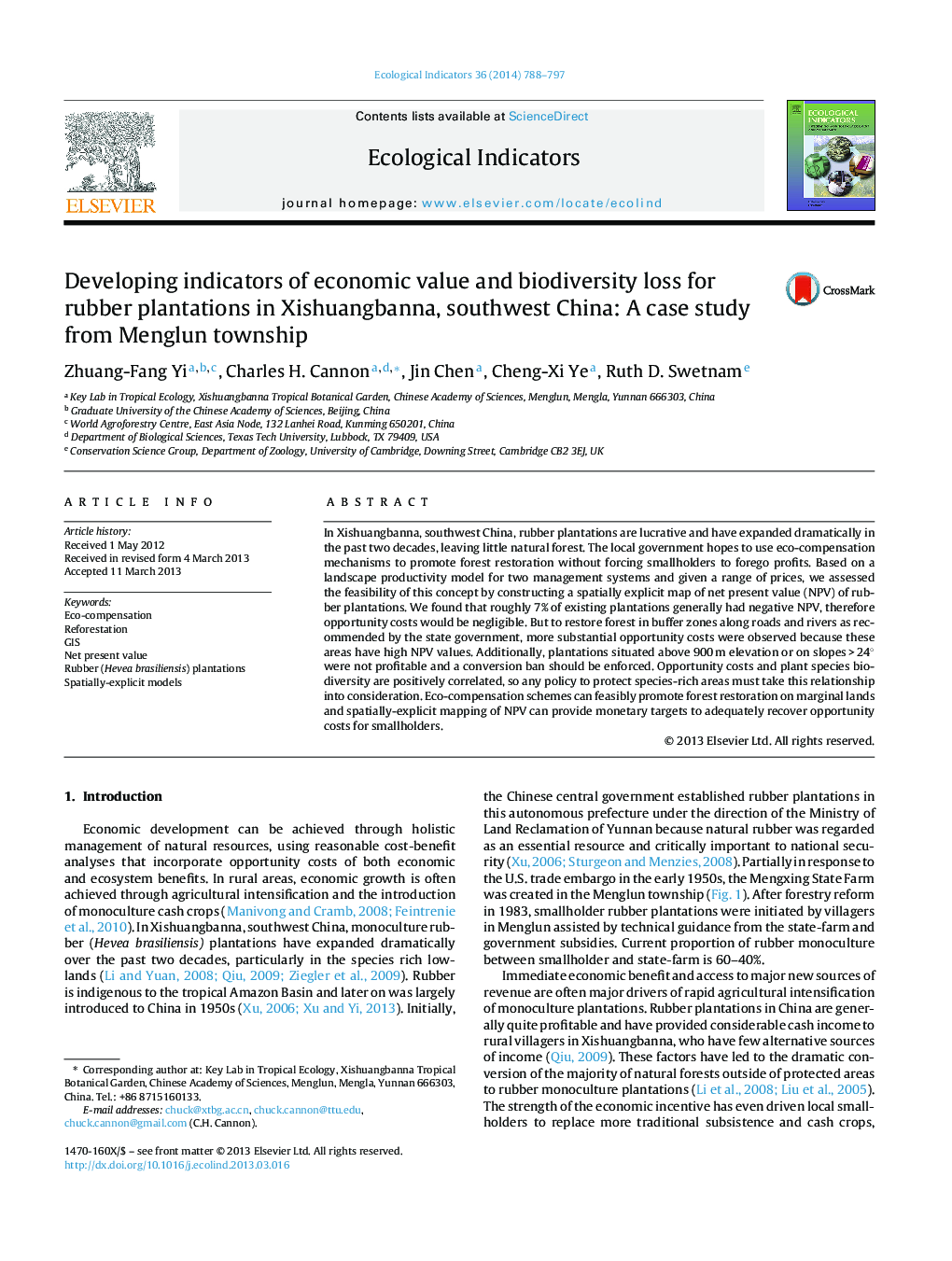| Article ID | Journal | Published Year | Pages | File Type |
|---|---|---|---|---|
| 4373376 | Ecological Indicators | 2014 | 10 Pages |
•Spatially-explicit models of economic value for rubber plantations are created for the Menglun township, Yunnan, China.•Forest recovery on low-profit rubber plantations is an easily affordable policy option and encompasses 7% of the township's area.•Rubber plantations situated above 900 m elevation or on slopes >24° were never profitable and forest should be restored.•In Xishuangbanna, natural areas with highest alpha biodiversity spatially coincide with the most profitable rubber sites.•Reforestation of high-profit rubber plantations will gain higher biodiversity but will require adequate government subsidies.
In Xishuangbanna, southwest China, rubber plantations are lucrative and have expanded dramatically in the past two decades, leaving little natural forest. The local government hopes to use eco-compensation mechanisms to promote forest restoration without forcing smallholders to forego profits. Based on a landscape productivity model for two management systems and given a range of prices, we assessed the feasibility of this concept by constructing a spatially explicit map of net present value (NPV) of rubber plantations. We found that roughly 7% of existing plantations generally had negative NPV, therefore opportunity costs would be negligible. But to restore forest in buffer zones along roads and rivers as recommended by the state government, more substantial opportunity costs were observed because these areas have high NPV values. Additionally, plantations situated above 900 m elevation or on slopes > 24° were not profitable and a conversion ban should be enforced. Opportunity costs and plant species biodiversity are positively correlated, so any policy to protect species-rich areas must take this relationship into consideration. Eco-compensation schemes can feasibly promote forest restoration on marginal lands and spatially-explicit mapping of NPV can provide monetary targets to adequately recover opportunity costs for smallholders.
